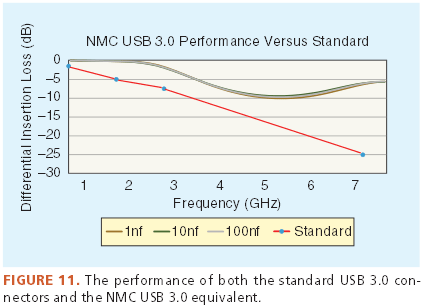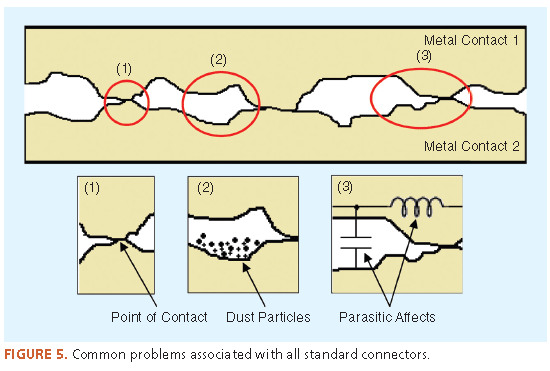In over 25 years of electronics troubleshooting on a wide variety of analog and digital equipment, some of it cutting edge, I have concluded that a majority of failures were due to failed connections. That is, components such as switches, plugs and jacks, crimped wire terminals, circuit board conductor fabrication, and solder joints failed more often than the components they connect. In the 21st Century (I like saying that) connectors, other than optical systems, still rely on old technology: mechanical contact between conductors.
This diagram shows problems associated with standard connectors. Research indicates that approximately 1% of the metal-to-metal contact surface area makes contact, and the rest is wasted space (which facilitates corrosion, debris, etc.). In one of my classes, the instructor discussed issues with connectors found by NASA–one wild problem was failures due to fungus!
The good news is that Non-mating Connectors (NMCs) use a totally different technology to transfer signals and power, and hold great promise for increasing the reliability of electronic equipment. In the January, 2014 issue of IEEE Consumer Electronics Magazine, Joshua Benjestorf of the NMC Corporation, published a fine article, “A New Trend in Connectivity” (link opens in new window) covering both conventional and NMC types. To summarize, the connectors use capacitance for data and inductance for power transfers. From the article, the graph below compares NMC vs. conventional connectors for the USB 3.0 standard signal channels.

The efficiency of NMC connectors increases with frequency.
Click here to open the full article in a new window (Adobe Acrobat file).

